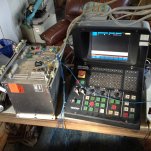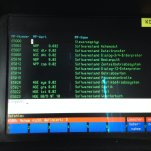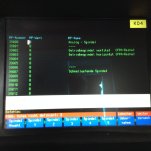Martin P
Titanium
- Joined
- Aug 12, 2004
Very near me an FP4-60 was up to get scrapped after long storage and I made an offer for on-site parts removal.
The deal was that I could remove all I wanted and afterwards the seller would give the rest to the scrapper.
This machine weighs 4 tons.
In principle the FP4-60 seems based on the design of the FP5NC, meaning the table slides on a stationary x knee.
It has a Dialog 12 control, in this case with the digitilization option (special NRP card: NRP04D).
It has a full enclosure with closed ceiling to allow for flood coolant.
Depending on option it could come with flip head or sliding head and with or without toolchanger.
This was the simple version without, but this does not make it smaller, it just created a lot of empty space.
This machine has the univeral table, identical to the FP5NC.
I was in it for some cards of the D12 control and the control console with TFT. Hope to resell other stuff to break even.
The machine came out of AMG some years ago (the Mercedes AMG) and they must have painted it, BADLY. So it looked like it was in a fire.
The universal table has a terrible top, bad marks in it.
A lista tool cart came with it, including a Röhm vise, rather abused looking but working, 25 tool holders and including a 3D Taster that does not return to zero.
After removing the way covers it became clear that the machine was shot, bad rust on the ways.
So in 7 hours with 2 people I took everything inside the electrical cabinet (my buddy went a little overboard), the head with slide, the servos, the scales, the control and its panel, central lube, gear lube system, hydraulic system, table, Bosch drive parts, odd ends.
I did not take the gearbox parts and ball spindles and the spindle motor.
The machine was covered with rust protection oil, which was all stuck to me afterwards. Unfortunately none of this was sprayed under the way covers, where it would have been most needed.
It was a fun day and now I have to check in how far the control and the screen will work.
It did come with full documentation (except parts list) and parameter listing, so it is interesting.
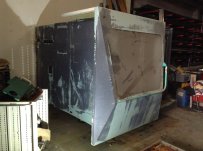
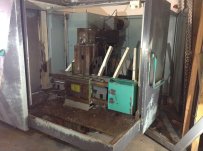
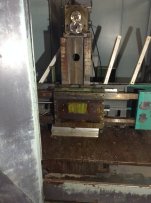
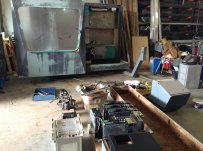
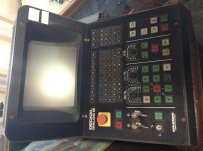



The deal was that I could remove all I wanted and afterwards the seller would give the rest to the scrapper.
This machine weighs 4 tons.
In principle the FP4-60 seems based on the design of the FP5NC, meaning the table slides on a stationary x knee.
It has a Dialog 12 control, in this case with the digitilization option (special NRP card: NRP04D).
It has a full enclosure with closed ceiling to allow for flood coolant.
Depending on option it could come with flip head or sliding head and with or without toolchanger.
This was the simple version without, but this does not make it smaller, it just created a lot of empty space.
This machine has the univeral table, identical to the FP5NC.
I was in it for some cards of the D12 control and the control console with TFT. Hope to resell other stuff to break even.
The machine came out of AMG some years ago (the Mercedes AMG) and they must have painted it, BADLY. So it looked like it was in a fire.
The universal table has a terrible top, bad marks in it.
A lista tool cart came with it, including a Röhm vise, rather abused looking but working, 25 tool holders and including a 3D Taster that does not return to zero.
After removing the way covers it became clear that the machine was shot, bad rust on the ways.
So in 7 hours with 2 people I took everything inside the electrical cabinet (my buddy went a little overboard), the head with slide, the servos, the scales, the control and its panel, central lube, gear lube system, hydraulic system, table, Bosch drive parts, odd ends.
I did not take the gearbox parts and ball spindles and the spindle motor.
The machine was covered with rust protection oil, which was all stuck to me afterwards. Unfortunately none of this was sprayed under the way covers, where it would have been most needed.
It was a fun day and now I have to check in how far the control and the screen will work.
It did come with full documentation (except parts list) and parameter listing, so it is interesting.








Last edited:





